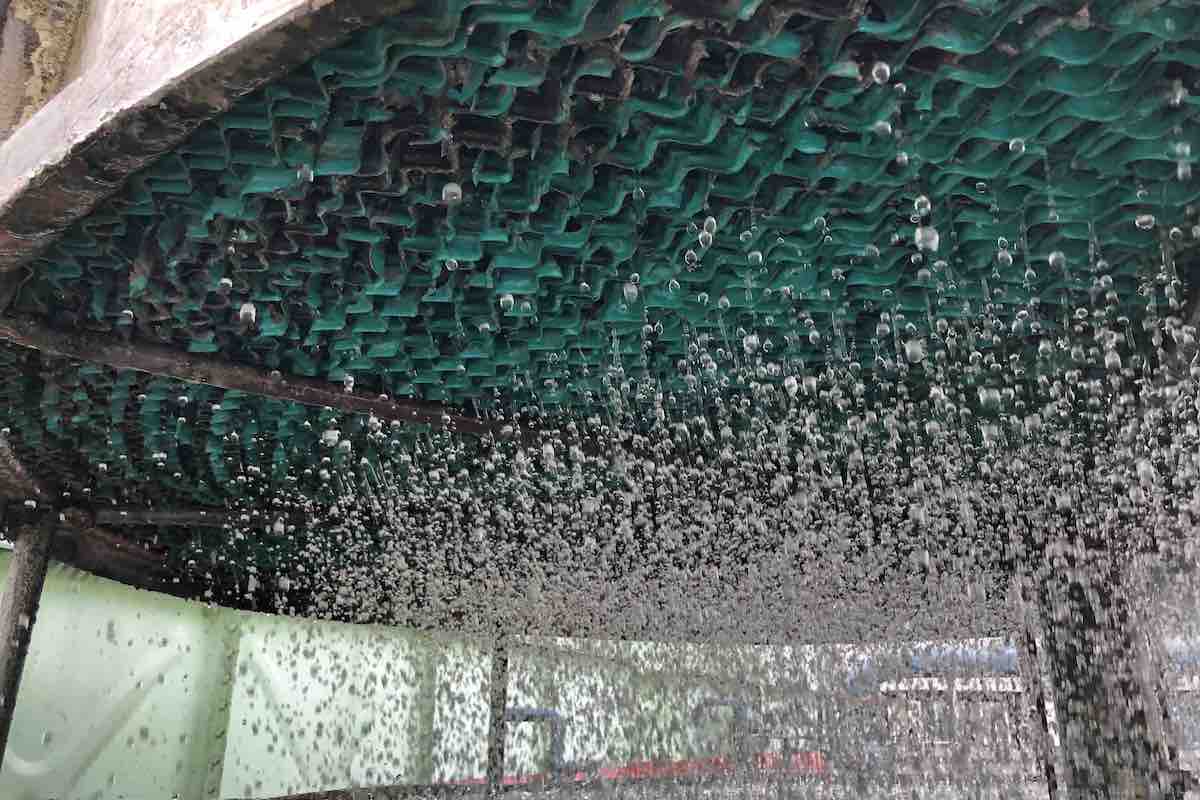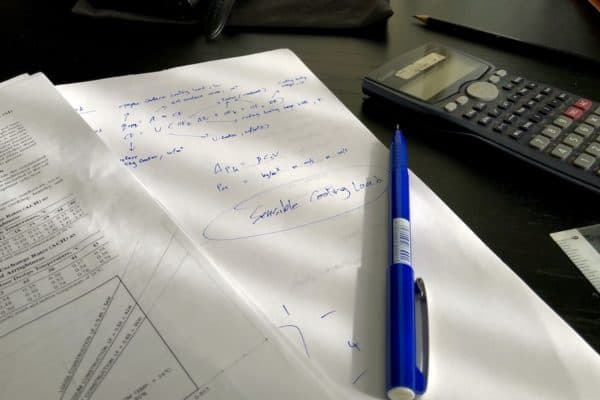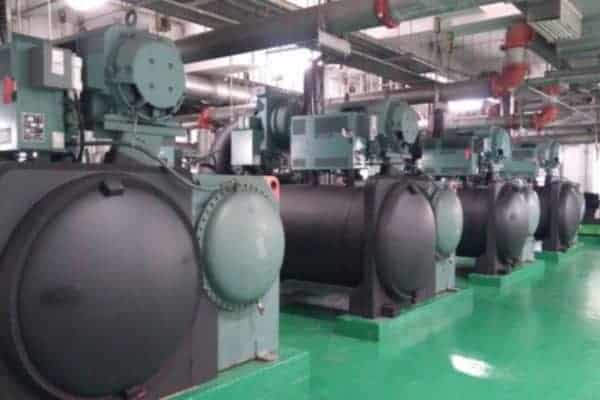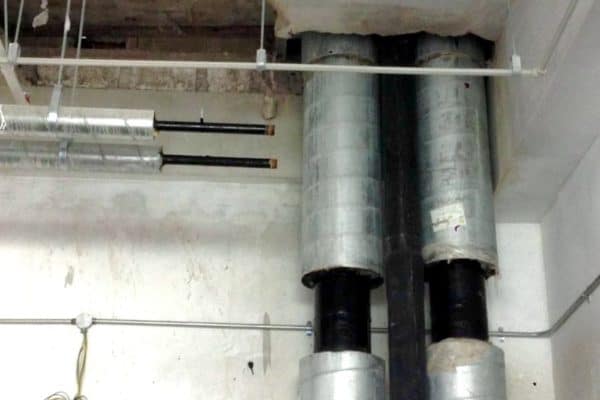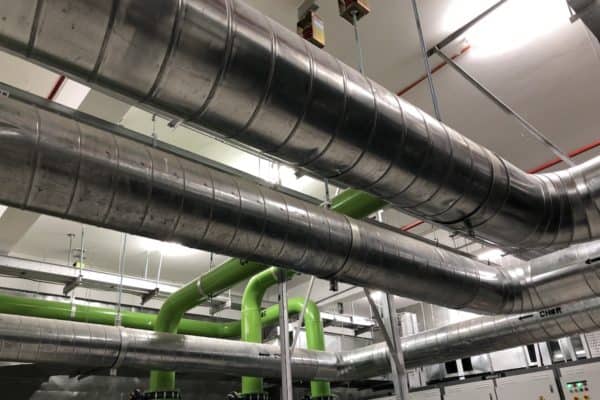How Cooling Towers Work? (HVAC Applications)
Cooling towers are one of the major components of HVAC. They are used to reject heat in chilled water systems. Many people don’t actually realize the principle behind cooling towers. So, how cooling towers work?
Cooling towers work by spreading condenser water onto a large surface area and forcing the ambient air to flow through the condenser water so that the temperature of the condenser water can be reduced effectively through evaporative cooling.
Even engineers sometimes don’t realize that the working principle of cooling towers is actually based on evaporative cooling. Furthermore, there is a geographical limit to how much heat can be rejected by cooling towers.
Cooling Towers Working Principle
Cooling towers reject heat using the principle of evaporative cooling. Cooling towers are essentially enhancing the evaporation rate of water to provide effective cooling.
Cooling Tower Components
A cooling tower consists of 4 major components; a) fan, b) water sprinkler, c) infill and d) basin. The following diagram illustrates the components of a cooling tower:

First, water is splashed onto the infill of a cooling tower by the water sprinkler to increase the contact surface area of the water. Then, the fan draws the surrounding ambient air through the infill to cool the water.
The above photo is a small cooling tower which you can see the inside of it. Usually, the more commonly seen cooling towers are either in a square or a rectangular shape.
Infill is basically a sort of plastic material that slows down the water flow to maximize the evaporative cooling effect. Besides, cooling tower infill is replaceable.
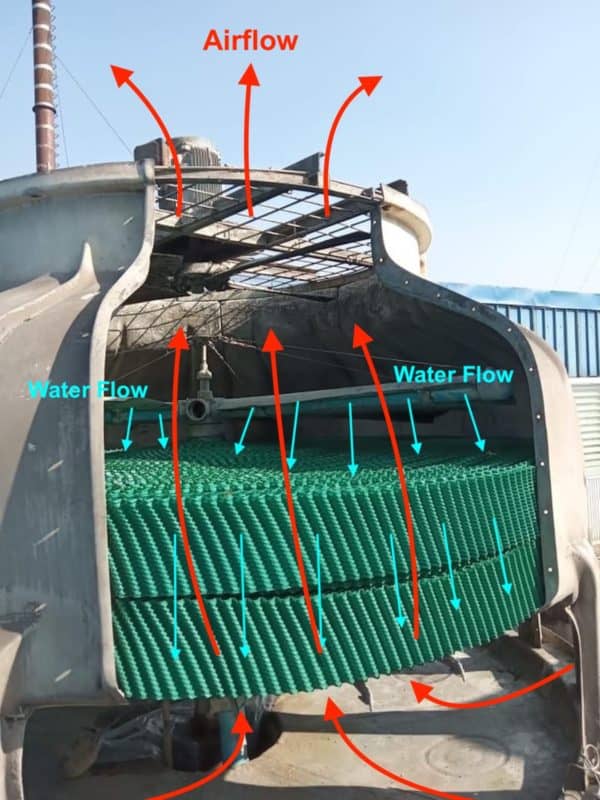
Once the water passes through the cooling tower infill, heat is rejected via evaporation and the water is then collected on a basin at the bottom of the cooling tower before flowing back to the pipeline. In HVAC, the water leaving the cooling tower is known as the condenser water return (CWR).

Water evaporates at any temperature above freezing. However, water is unable to evaporate further if the surrounding air is saturated (100% relative humidity). At 100% relative humidity, there is no room for water vapor anymore.
Hence, cooling towers force the ambient air through their infill (and thus, the condenser water) to not just continue the evaporation process but also improve the evaporation rate.
Imagine that you’re hanging your clothes. If there is wind, your clothes will dry faster because water evaporates at a faster rate.
However, the temperature of the condenser water return is limited by the ambient wet bulb temperature. This is the part where most people get it wrong.
On a side note, if you want to quickly learn about chilled water system, you can get my Chilled Water System (eBook). If you’re into design, you can enroll in my Chilled Water System Design Course where I teach you various design procedures with tons of examples.
Chilled Water System Design Course
Learn how to design a chilled water system with AHU/FCU selection, chiller sizing, cooling tower sizing, pump sizing, piping design, ductwork design and more.
Cooling Tower Wet Bulb Temperature
Due to the nature of evaporative cooling, the lowest possible condenser water return temperature of cooling towers is depending on the surrounding wet bulb temperature.
Hence, cooling tower condenser water return temperature is geographical dependent.
In countries like Malaysia and Singapore, we have an average wet bulb temperature of 27.8°C (82°F). Thus, we often design cooling towers at a condenser water return temperature of around 30°C (86°F) with a cooling tower approach of below 2.8°C (5°F).
Cooling tower approach is the difference between the condenser water return temperature and the surrounding wet bulb temperature. For more details, see my post What is Chiller Approach?.
One of the most common mistakes some engineers make regarding cooling tower performance is not realizing that the lowest possible condenser water return temperature in certain regions of the world is not applicable to other regions of the world because of different wet bulb temperatures.
For example, many handbooks suggest that lowering the condenser water return temperature can improve chiller efficiency. However, if the surrounding wet bulb temperature is not low enough, it can’t be done.
Another common misunderstanding associated with cooling tower wet bulb temperature is about reducing chiller lift to improve chiller efficiency by lowering the condenser water return temperature. However, the same applies here.
Again, the lowest possible condenser water return temperature is based on the surrounding wet bulb temperature. The lower the wet bulb temperature, the lower the condenser water return temperature depending on the design of the cooling tower.
In countries like the United States, the wet bulb temperature can go down to as low as 15°C (59°F). This allows chillers to operate more efficiently, subject to their mechanical limitations.
Because of water evaporation, cooling towers need additional water to makeup for the water losses. Makeup water is stored in a makeup water tank located nearby cooling towers.
Counterflow and Crossflow Cooling Towers
Cooling towers have two types; a) counterflow and b) crossflow. The working principle I explained earlier is based on counterflow cooling towers.
In a counterflow cooling tower, air and water flow in an opposite direction, countering each other.
Whereas for a crossflow cooling tower, air enters from the side of the cooling tower infill and leaves at the top of the cooling tower, crossing the water path in the process.
How Cooling Towers Work With Chillers?
Cooling towers are used to reject the heat absorbed by chillers. Cooling towers typically work with water-cooled chillers only. Air-cooled chillers don’t need cooling towers.
Chillers produce chilled water to absorb the heat inside a building. When the chilled water returns back to the chillers, it transfers the absorbed heat to the condenser water via a refrigeration cycle process. Then, the condenser water is pumped to several cooling towers for heat rejection.
Relevant post: Chilled Water System: Components, Diagrams & Applications.
The number of cooling towers in operation must be synchronized with the number of chillers in operation as well as the actual cooling demand. Too many cooling towers in operation will result in energy wastage and not enough cooling towers in operation may cause chiller tripping problems.
Related Questions
- Do Cooling Towers Use Refrigerant? Cooling towers don’t use refrigerant. They don’t use the refrigeration cycle like chillers to cool water. Instead, they use the principle of evaporative cooling.
- Do Cooling Towers Pollute? Cooling towers do not emit harmful gases but only water vapor and thus, they don’t pollute. However, large cooling towers do consume a siginificant amount of power which can indirectly cause pollution if the power source is not renewable.
- Is a Cooling Tower a Condenser? A cooling tower is not a condenser. Condensation doesn’t occur at the cooling tower. A cooling tower is basically a large evaporative cooler.
Once again, you can get my Chilled Water System (eBook) to quickly learn more about chilled water system. But, if you want to learn how to design a chilled water system from start to end, I encourage you check out my Chilled Water System Design Course.
Chilled Water System Design Course
Learn how to design a chilled water system with AHU/FCU selection, chiller sizing, cooling tower sizing, pump sizing, piping design, ductwork design and more.
If you have anything to add (or ask) about this topic, leave a comment down below!


